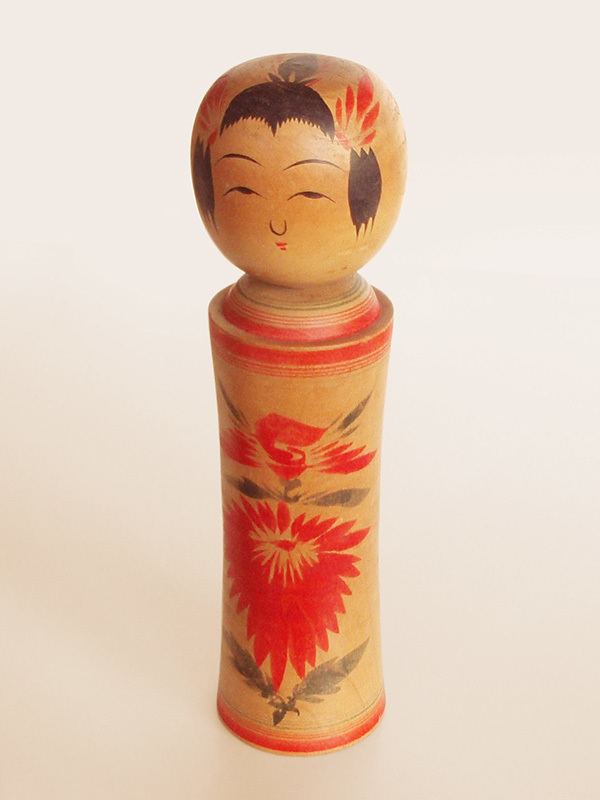 | ||
Kokeshi (こけし, こけし, kokeshi), are Japanese dolls, originally from northern Japan. They are handmade from wood, have a simple trunk and an enlarged head with a few thin, painted lines to define the face. The body has a floral design painted in red, black, and sometimes yellow, and covered with a layer of wax. One characteristic of kokeshi dolls is their lack of arms or legs. The bottom is typically marked with the signature of the artist.
Contents
History and etymology
The origin and naming of kokeshi is unclear, with historical ateji spellings including 小芥子, 木牌子, 木形子, and 木芥子. The hiragana spelling こけし was agreed on at the All-Japan Kokeshi Exhibition (全国こけし大会) at Naruko Onsen in August 1939. A plausible theory is that "kokeshi" is derived from wooden (木, ki, ko) or small (小, ko), and dolls (芥子, keshi).
Kokeshi were first produced by kijishi (木地師), artisans proficient with a potter's wheel, at the Shinchi Shuraku, near the Tōgatta Onsen in Zaō from where kokeshi-making techniques spread to other spa areas in the Tōhoku region. It is said that these dolls were originally made during the middle of the Edo period (1600–1868) to be sold to people who were visiting the hot springs in the north-east of the country.
In popular culture
Kokeshi dolls have been used as an inspiration for the style of Nintendo's digital avatars, called "Miis", which are created and customized by players. Their appearance has become the symbol of the platform's overall aesthetic.
One also makes an appearance in Super Dangan Ronpa 2: Sayonara Zetsubou Gakuen, except it's a vibrator.
Types
"Traditional" kokeshi (伝統こけし, dentō-kokeshi) dolls' shapes and patterns are particular to a certain area and are classified under eleven types, shown below. The most dominant type is the Naruko variety originally made in Miyagi Prefecture, which can also be found in Akita, Iwate, and Yamagata Prefectures. The main street of the Naruko Onsen Village is known as Kokeshi Street and has shops which are operated directly by the kokeshi carvers.
"Creative" kokeshi (新型こけし, shingata-kokeshi) allow the artist complete freedom in terms of shape, design and color and were developed after World War II (1945). They are not particular to a specific region of Japan and generally creative kokeshi artists are found in cities.
The woods used for kokeshi vary, with cherry used for its darkness and dogwood for its softer qualities. Itaya-kaede, a Japanese maple, is also used in the creation of both traditional and creative dolls. The wood is left outdoors to season for one to five years before it can be used.
Traditional types
Traditional types often correspond to a single or multiple onsen located within the Tōhoku region.
